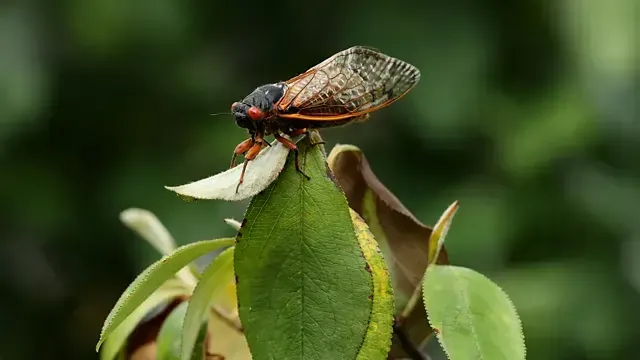Grace Soltis, a PhD student in evolutionary biology at Florida State University, explains the ecological impact of these mass emergences: "Cicada emergences can completely rewire a food web. For predators, these emergences are a huge boom in resources. It's basically like an all-you-can-eat buffet for the hungry predator." Indeed, the emergence of periodical cicadas serves as a lavish banquet for a wide array of wildlife, with birds being among the primary beneficiaries.
John Lill, a professor of biology at George Washington University, highlights the scale of the phenomenon, stating that mass cicada emergences can cover up to 190,000 square miles. This sudden influx of food prompts a diet shift among birds, leading to a ripple effect down the food chain. Wild turkeys, shrews, bats, spiders, wasps, and even snakes join in on the feast, further amplifying the disruption to the ecosystem.
A study published in 2023 revealed that more than 80 species of birds altered their diets to feed on cicadas during the 2021 emergence. However, what the birds weren't eating during this time proved to be equally consequential. With caterpillars left off the menu, their populations surged, resulting in increased damage to trees. As Lill notes, "There's consequences for the food web because of all the things that go uneaten."
While the immediate impact of cicada emergences is apparent, the long-term effects are still not fully understood. Lill explains that although birds revert to their normal diets once the cicada emergence ends, the increased availability of food leads to a population boom among predators. This surge in predator populations can have cascading effects on the ecosystem in subsequent years when cicada populations dwindle.
Despite the relatively short duration of cicada emergence events, which typically last five to seven weeks, they offer a unique opportunity for scientists to study the effects of a "resource pulse" on ecosystems. Cicadas play a crucial role in soil nutrient cycling, with their decomposing carcasses and emergence holes enriching the soil. However, the real-time impacts of living cicadas on food webs remain largely unexplored.
The influence of climate change on cicada emergences adds another layer of complexity to the equation. Periodical cicadas have evolved to adapt to changing climatic conditions over millennia, but rising temperatures are expected to alter their emergence patterns. Soltis emphasizes the need for further research in this area, stating, "The effects of climate change on cicadas and their food webs remain to be seen. I hope we can collect more data on this during these emergences."
As temperatures continue to rise, experts predict that cicada emergences may start earlier in the year, and odd, unpredicted emergences could become more common. This underscores the importance of ongoing monitoring and research to understand the evolving dynamics between cicadas and their ecosystems in the face of climate change.
In conclusion, the dual emergence of periodical cicadas in 2024 has unleashed a frenzy of feeding among wildlife, disrupting food chains and ecosystems across vast regions of the United States. While the immediate effects are evident, the long-term implications and the influence of climate change warrant further investigation. As scientists continue to study these fascinating insects, they hope to gain insights into how ecosystems respond to large-scale disturbances and adapt to a changing climate.

